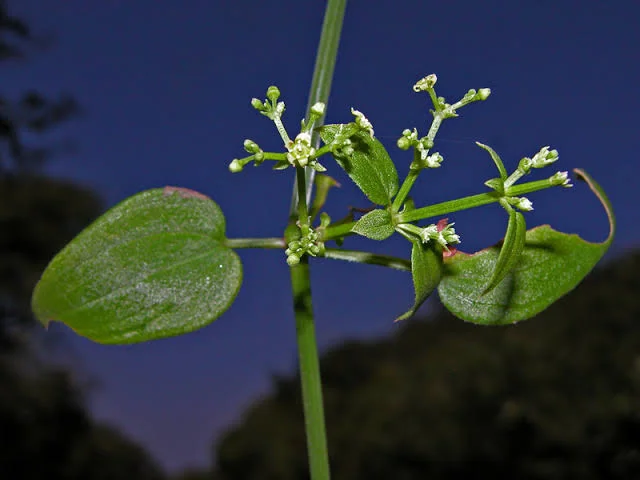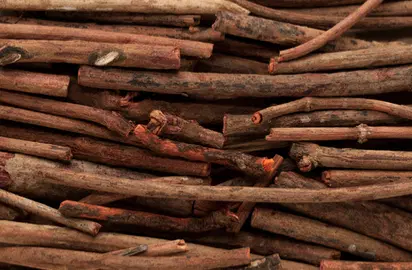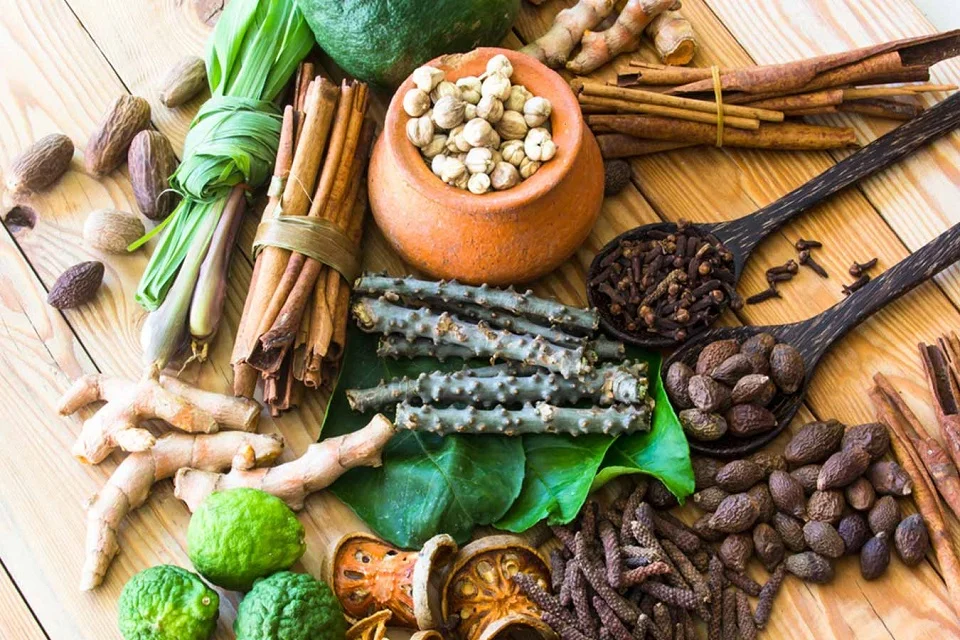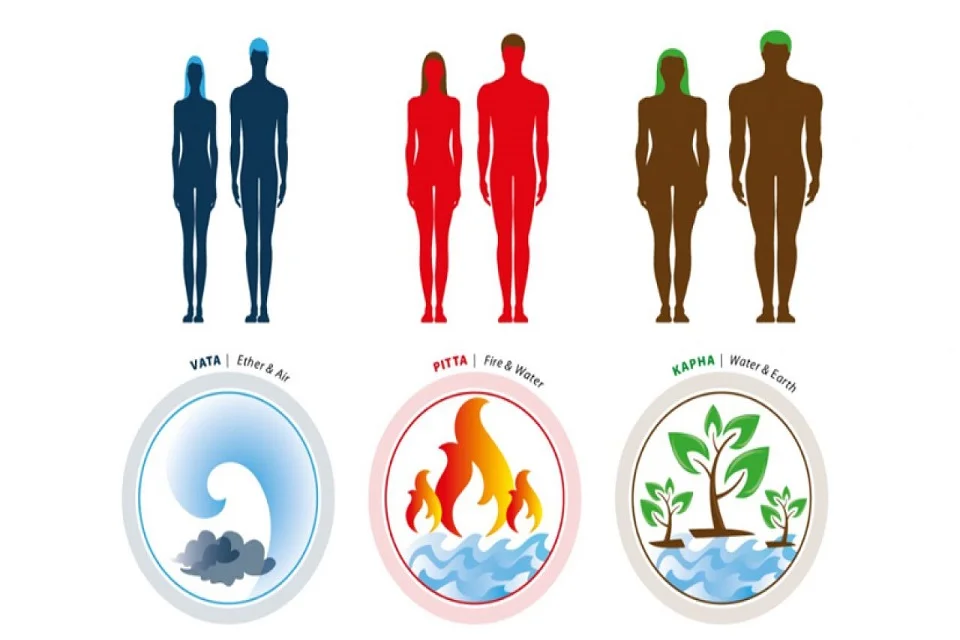Benefits of Manjishtha, dosage, side effects, and how to use it?
What is Manjishtha? Manjistha is one of the most important herbs in Ayurveda. Benefits of Manjishtha has been mentioned in traditional …

What is Manjishtha?
Manjistha is one of the most important herbs in Ayurveda. Benefits of Manjishtha has been mentioned in traditional Ayurvedic medicine for centuries. It is primarily known for its detoxifying and blood-purifying properties. Benefits of Manjishtha are healthy skin, and improving liver and kidney health.
What is the Morphology of Rubia cordifolia?

Latin name– Rubia cordifolia L. (Fam. Rubiaceae)
Rubia cordifolia plant has long, woody stems that can climb on other vegetation or structures for support. It can grow up to 150cm. Its leaves are simple, elliptical, and arranged in opposite pairs along the stem. The roots can be over a meter long and up to 12 millimeters thick. The flowers are small and greenish-yellow in color. It is found throughout India.
Synonyms
Yojanavalli, Tamravalli, Vastraranjini, Rakta, Vikasa, Manjith
Classical Categorization
Charak:Jvarhar, Varnya, Vishaghna
Sushruta:Priyangvadi, Pittashamshamna
Vaghbhatta:Priyangvadi
Other/Regional Language Names
- English:Indian Madder
- Gujarati:Manjitha
- Hindi:Manjitha, Manjit
- Kannada:Manjustha
- Malayalam:Manjatti, Manchatti
- Marathi:Manjishtha
- Punjabi:Manjistha, Manjit
- Tamil:Manatte, Manjitti
- Telugu:Manjishtha
- Assamese:Phuvva
- Bengali:Manjishtha, Manjith
Constituents
Manjistine, Rubiadin, anthraquinones, Alizarin, Purpurin, Purpuroxanthin, Rubicoumaric acid, Rubifolic acid, Pseudopurpurin, Alizarin, Rubimallin, Xanthopurpurin, Ruberythric acid.
Rasa Panchak
- Rasa:Kashay, Tikta, Madhura
- Guna:Laghu, Ruksha
- Virya:Shita
- Vipaka:Katu
- Karma:Pittashamsaman, Sandhaniya, Varnya, Vranaropana
References in Ayurvedic texts
मञ्जिष्ठा मधुरा तिक्ता कष्ट्या स्वरवर्णकृत्
गुरूरूष्णा विषश्लेष्मशोथ योन्यक्षिककरणक
रक्तातीसार कुष्ठास्रवीसर्पव्रणमेहनुत।
(भा.प्र.नि. हरीतक्यादि वर्ग 191)
मञ्जिष्ठातुवरा तिक्ता स्वर्योष्णा मधुरा गुरूः
कर्णाक्षियोनिरोगघ्नी कफशोफविषापहा।
विसर्पमेहकुष्ठार्शोव्रणरक्तातिसारजित्
शाकं स्वादु लघु स्निग्धं दीपनं वातपित्तजित्।
(कै. दे.नि. ओषधिवर्ग 1426-1427)
मञ्जिष्ठा मधुरा स्वादे कषायोष्णा गुरुस्तथा
कफोग्रव्रणमेहास्र विष नेत्रामयाञ्जयेत्।
(ध.नि.गुडूच्यादिवर्ग 19)
What are Benefits of Manjishtha?
- Bhagna (fracture)
- Tvakroga (skin disease)
- Garbhapata (abortion)
- Vrana (wound)
- Pakvatisara (chronic diarrhea)
- Vyanga (dark shade on face due to stress and excessive exercise)
What is the use of Manjishtha in texts?
- Manjistha and Chandana kashaya are useful in Manjistha meha. (Su.Chi. 11/9)
- Ghee prepared with Manjistha and Shigru should be given in Bleeding Piles. (Su.Chi. 6/9)
- Manjistha and Madhuka are made into a paste using Amla Dravya and applied externally in Kandabhagna. (V.M.)
- Manjistha Kvatha is used to wash the chronic wound, non-healing ulcers, etc.
- manjistha benefits for skin
Manjistha stem or roots fine powder is rubbed with water and applied over skin lesions such as pimples and dark spots.
How much is Dose?
Churna – 3-6 gm
What are the Useful Part
Mula (Root)

What are the side effects of Manjishtha?
- An excess of Manjistha can alter the color of urine and stool, turning them orange or brown.
- Individuals already on anticoagulant medications should take it cautiously, because Manjistha also possesses anti-platelet properties.
- Side effects are of taking the drug in high doses, under the guidance of qualified vaidya, or in appropriate doses it is safe to consume.
Additional information
List of formulations
- Manjisthadi churna-kwatha
- Methikadi churna
Morphology -Lata (Climber)
Research
- Effects of Triphala and Manjistha Dietary Supplementation on Human Gut Microbiota
- Rubimallin showed antibacterial activity (Yaoxue Xuebao 1990, 25, 834).
- Antitumor cyclic hexapeptide, RA-VII from R. cordifolia is reported (Itokawa et al., 1992).
- Four naphthohydroquinones and two naphthohydroquinones from R. cordifolia and their cytotoxic activity are reported (Itokawa et al., 1993).
- Antitumor activity of RC-18, a pure isolate from R. cordifolia was reported (Adwankar & Chitnis, 1980 & 1982).
- The anti-peroxidative property of solvent-free alcoholic extract of R-cordifolia has been studied in rat liver homogenate. It prevents the cumene hydroperoxide-induced malondialdehyde formation in a dose and time-dependent manner. This effect is accompanied by the maintained reduced glutathione level even in the presence of the above toxin (Pandey et al., 1994).
- The blood purification effect of the partially purified fraction of this whole plant has been studied on rabbit platelets. It inhibits the platelet aggregation induced by PAF (platelet-activating factor) but not thrombin. It also inhibits the binding of 3H-PAF to the platelets in a dose-dependent manner. Thus, it appears that R. cordifolia inhibits the action of PAF at its receptor level either by blocking or by desensitization (Tripathi et al., 1993).
- The napthohydroquinones (furomollugin, mollugin & rubilactone) suppressed the secretion of hepatitis B surface antigen (HBsAg) in human hepatoma Hep 3B cells (Ho et al., 1996).
- Crude extract of R. cordifolia exhibited spasmolytic activity similar to that of verapamil, suggesting the presence of calcium channel blocker-like constituents in this plant (Gilani et al., 1994).
Conclusion
Manjistha (Rubia cordifolia) holds significant Ayurvedic importance, renowned for its diverse therapeutic properties. Its ability to purify blood, alleviate skin disorders, and support the lymphatic system makes it a valuable herb in Ayurveda. The plant’s anti-inflammatory and antioxidant attributes contribute to its widespread use in Ayurvedic formulations for conditions like acne, eczema, and arthritis. While proponents emphasize its holistic healing benefits, it’s essential to acknowledge that individual responses may vary. As with any herb, consulting with a qualified Ayurvedic practitioner is advisable to ensure personalized and optimal use, considering factors such as dosha imbalance and specific health conditions.








Got Something To Say